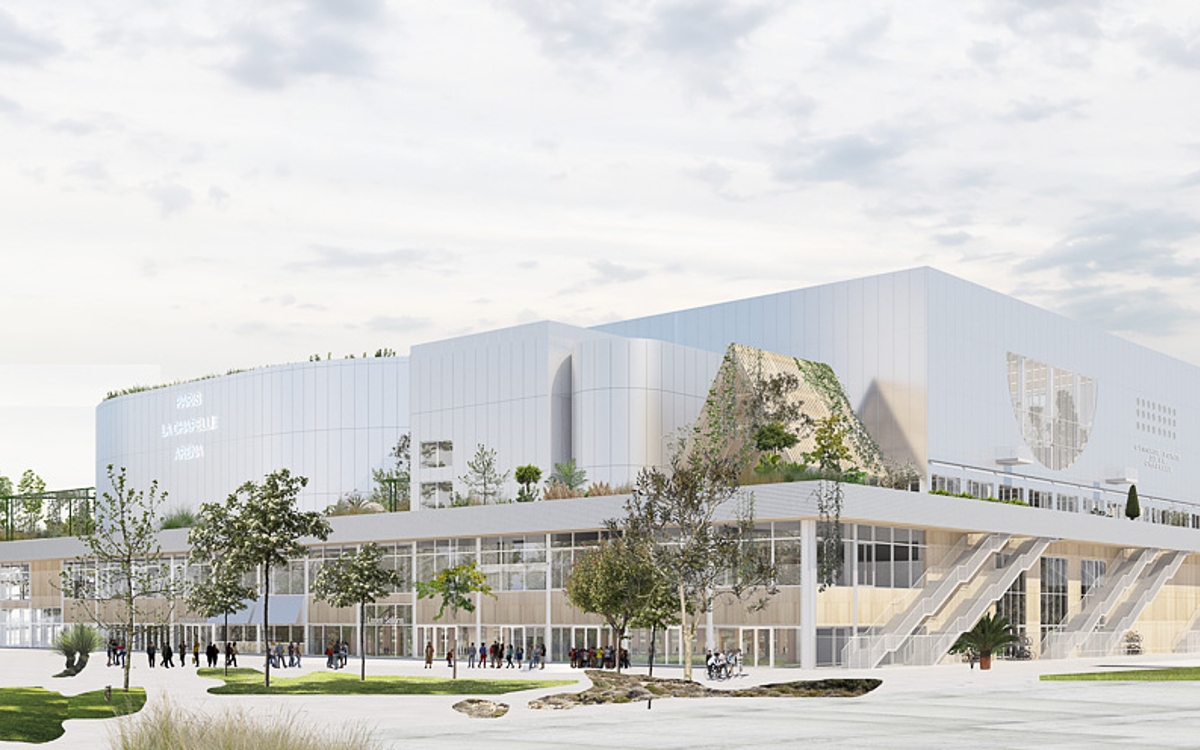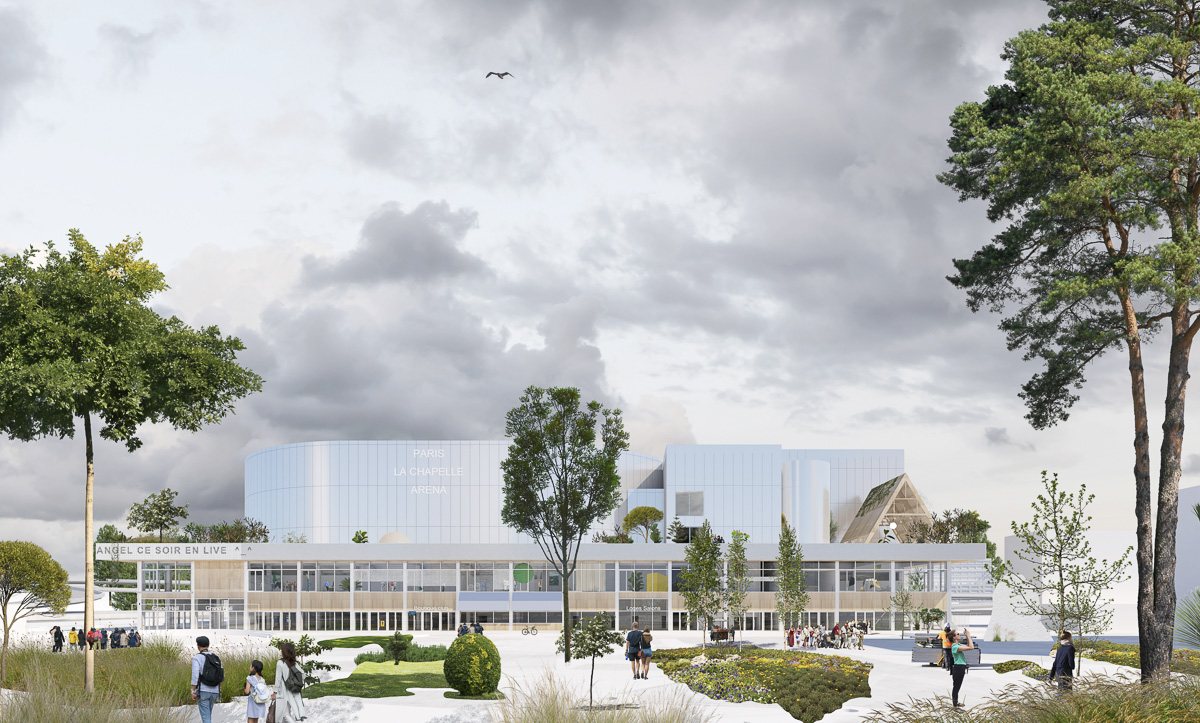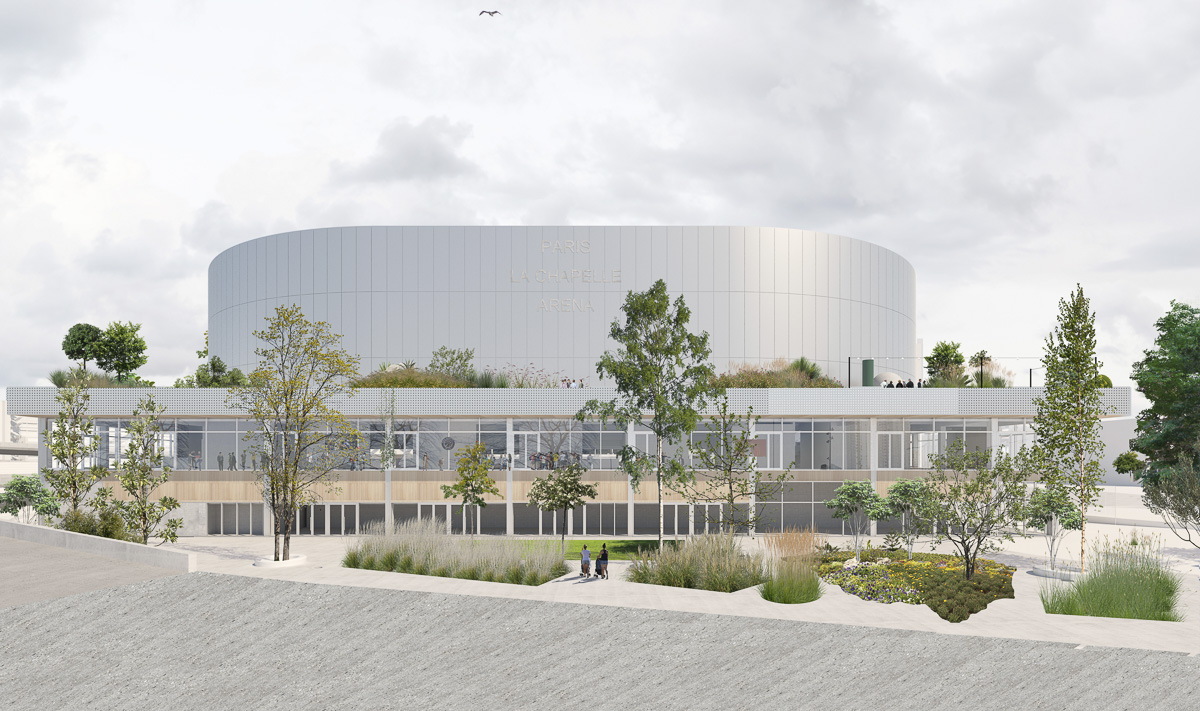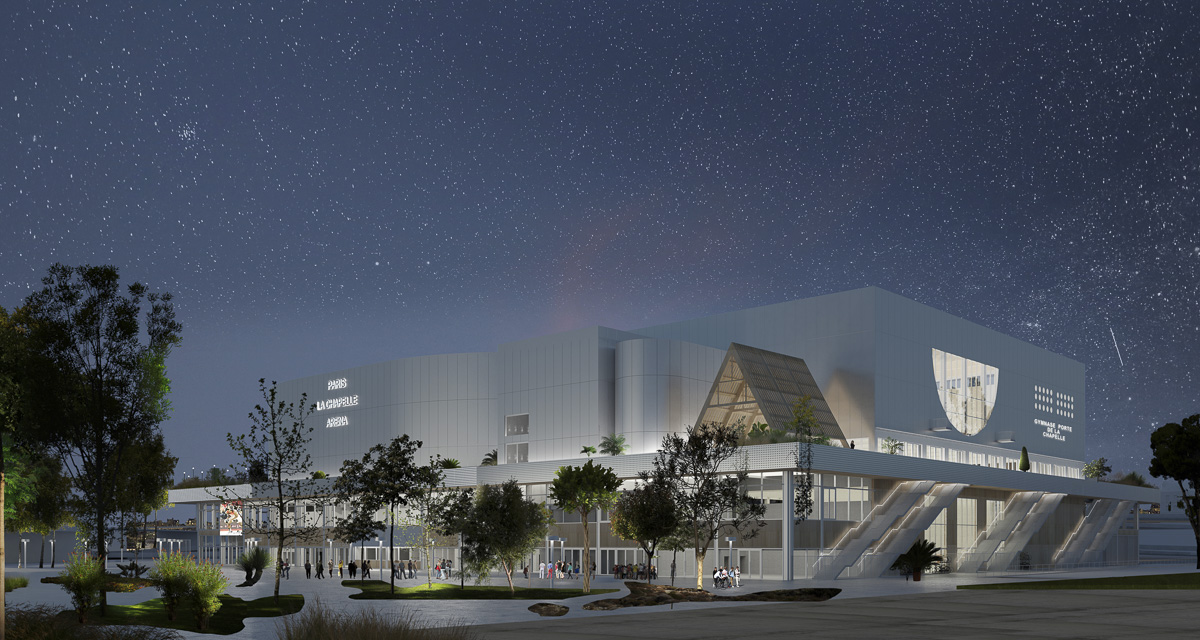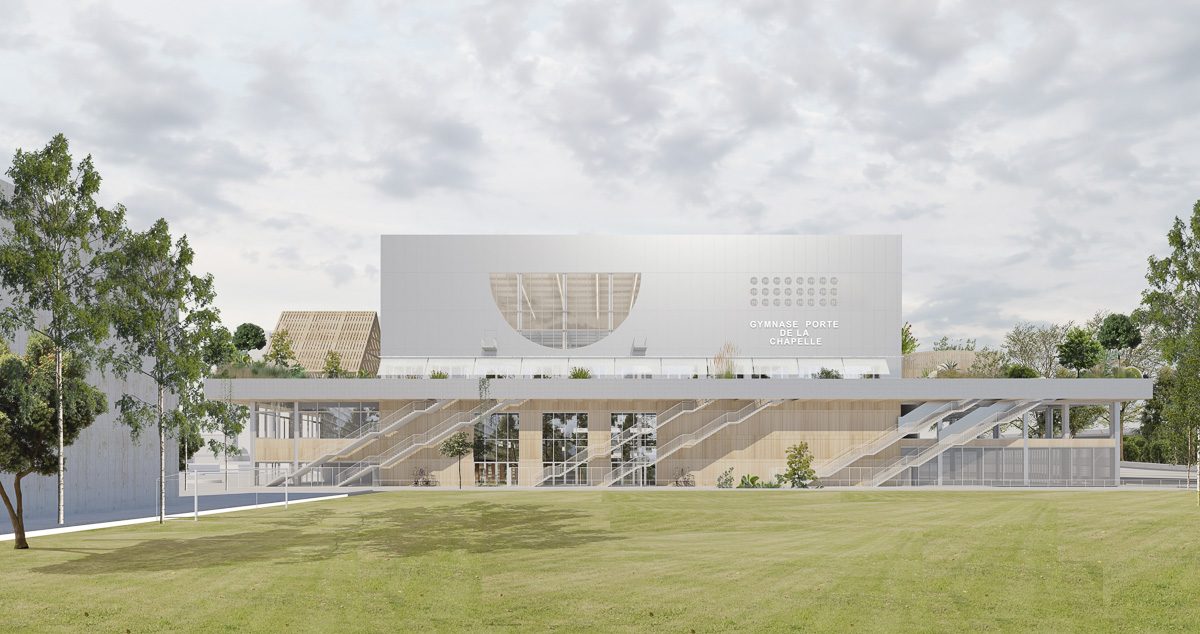Content
Cette page est aussi disponible en français
March 10th, 2020 was marked by a groundbreaking ceremony for the Arena Porte de la Chapelle, which will host events for the Paris 2024 Olympic and Paralympic Games. Discover the ideas behind this vast project and the future face of the Arena.
Construction is in full swing on the future Arena at Porte de la Chapelle (18th arrondissement). Since September 2020, site preparation work has been ongoing, following on from demolition work carried out in 2019 and 2020. Site installations, such as construction workers living quarters and tree protection, have been set up to allow preparatory work to begin.
What will the future look like?
Following analysis of the area, soil decontamination and consolidation work is now underway and will continue until summer 2021. From the outset of this preparatory phase, the Arena project has been exemplary in its focus on circular economy, giving available on site materials a second life and prioritizing recycling.
Vidéo Youtube
19,000 tons of waste recycled
In 2019, almost 4 tons of furniture, supplies and miscellaneous materials left over from the old parking lot building were distributed to 12 local structures to avoid creating extra waste.
95% of building materials from the demolished parking lot, i.e. almost 19,000 tons, were recycled. A concrete recycling unit was located less than 6 km from Porte de la Chapelle.
The synthetic pitches that had to be removed - and which will be rebuilt as part of the Gare des Mines-Fillettes ZAC project - have also been upgraded.
Waste from the previous site will be redistributed to two sites in France. Both of them use a process that separates sand, aggregates and synthetic fiber, enabling each material to be reused or recycled, or specifically treated for recovery.
All of the materials from these soccer pitches were recycled, saving over 310 tons of waste. Certain elements of the sports fields were also recycled as part of artistic projects linked to the ZAC.
Reuse of rocks in woods and gardens
Paris made sure to of reusing the large boulders that were on the site. The city's Green Spaces and Environment Department was responsible for their removal. The aim was to reuse them in Parisian woods and gardens, avoiding the creation of natural waste.
Roads used by construction workers leading up to site are also made of rubble from the Pantin cemetery, a few kilometres away.
110,000 hours of on site work experience
During the demolition phase, more than 8,000 hours of work experience meant the site created job opportunities. A total of 110,000 hours are planned between now and 2023. At present, four temporary workers are employed full-time out of fifteen permanent workers. Recruitment will continue in conjunction with reemployment centers: the 18th arrondissement town hall and EPEC, prioritizing locals.
26,000m2 of space for three facilities
The Porte de la Chapelle Arena will cover an area of around 26,000m2 and will feature three main facilities: a main hall, with a capacity of 8,000, for major sporting and cultural events - including the badminton and rhythmic gymnastics events at the Olympic Games and the para-badminton and para-weightlifting events at the Paralympic Games - two sports halls for local residents, and a 1,900m2 area dedicated to catering, leisure activities and local shops.
Its architecture is sober and elegant: a grounded building, composed of glass and wooden facades up to 11.50 metres tall, will be open to the public and the neighborhood. A terrace, with some fifty trees, will overlook the reception areas, allowing visitors to stroll right around the facility.
Solar panels, green roofing and extensive use of wood
Aluminium walls mark of the main hall and gymnasiums and give the structure a visual identity, while ensuring harmonious integration into its surroundings. They also contribute to the facility's environmental performance, with 1,850m² of solar panels and almost 6,900m² of green roofing.
Biosourced materials are widely favored, with wood being used extensively.
Another change in the project: the number of glazed surfaces of the eastern façade have been increased, to allow greater use of natural light which is a good way of highlighting the wooden framework of the two sports halls. These improvements will enhance the elegance of the exterior, which faces the Gare des Mines Fillettes district and is dedicated to local sports and activities.
Building schedule
-
Summer 2020 to June 2021: design, planning permissions and preliminary works (soil decontamination and consolidation).
-
December 18, 2020: building permission submitted to the authorities.
-
Summer 2021: construction of the Arena begins.
-
Summer 2023: end of construction work for the Arena and surrounding facilities open for locals
-
July - September 2024: the Arena hosts badminton and rhythmic gymnastics events of the Olympic Games and the para badminton and para weightlifting events of the Paralympic Games.
Before and after the Games
The Arena will host concerts, shows and high-level sporting events in its large hall. Residents of northern Paris will be able to use its facilities.
Since the attribution of design, construction and technical operations of the Arena Porte de la Chapelle to the consortium led by Bouygues Bâtiment Île-de-France and the architectural agencies SCAU and NP2F, and of the commercial operation contract to SAEPOPB last May, the Arena's architectural project has been refined. Its environmental aspects have been strengthened, enabling the City to submit the building permit on December 18th.
Our podcast
In the first episode of Enjeux, the podcast that answers Parisians' questions about the Games, Ève Brunelle, equipment project manager at the General Delegation for the Olympic and Paralympic Games, and Eric Monnin, French sports historian and sociologist, examine the tangible and intangible legacy of the 1924 edition, and discuss the catalytic effect of the Games on reconstruction work, while tracing the great history of the Olympics.
We want to hear from you!
Was this information useful to you?
Please note: we cannot reply via this form (please do not include any personal information).
